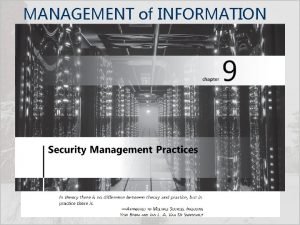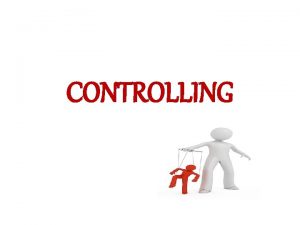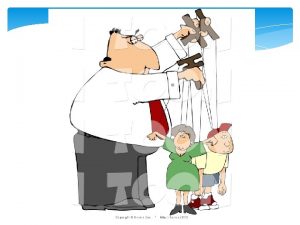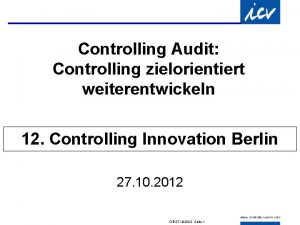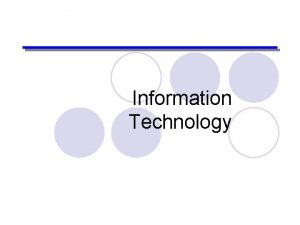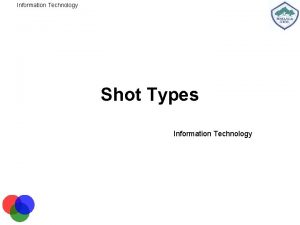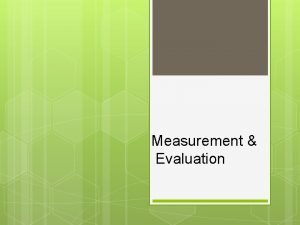Controlling and Information Technology Controlling The measurement and












- Slides: 12

Controlling and Information Technology

Controlling • The measurement and the correction of performance in order to make sure that enterprise objectives and the plans devised to attain them are being accomplished • The basic control process involves 3 steps: • Establishing Standards • Measuring performance against these standards • Correcting variations from standard and plans

• Principle of control point : Effective control requires attention to factors critical to evaluating performance against plans • Benchmarking : An approach for setting goals and productivity measures based on best industry practices • Three types of benchmarking : • Strategic • Operational • Management

Types of critical point standards 1. 2. 3. 4. 5. 6. 7. 8. Physical standards Cost standards Capital standards Revenue standards Program standards Intangible standards Goals as standards Strategic plans as control points for Strategic control

Requirements for effective controls • Tailoring controls to plan and positions • Tailoring controls to individual managers • Designing controls to point up exceptions at critical points (Efficient control requires that managers look for exceptions, while effective control requires that managers pay primary attention to things that are most important) • Seeking objectivity of controls • Ensuring flexibility of controls (If control are to remain effective despite failure or unexpected change of plans, they must be flexible) • Fitting the control to the organization culture • Achieving economy of control • Establishing control that lead to corrective action (An adequate control system will disclose where failures are occurring and who is responsible for them, as well as ensuring that corrective action is taken)

Budget as control device • A widely used device for managerial control is the Budget • Budgeting : The formation of plans for a given future period in numerical terms • Budgets are statements of anticipated results either in financial terms – as in revenue and expense • Budgets are used for planning and control • Zero base budgeting : Dividing enterprise programs in to packages composed of goals, activities and needed resources and calculating the cost for each package from base zero

Information Technology • It comprises of variety of technologies including various kinds of hardware, software, computing and communication technologies • Management information system: A formal system of gathering processing and dispersing information internal and external to enterprise in a timely, effective and efficient manner to support mangers in their jobs

Use of computers in handling information • The computer can store, retrieve and process data so that they become information • The application and impact of microcomputers • Opportunities and challenges created by Information Technology • • Speech recognition devices Telecommuting Computer networks Internet

Impact of computers in mangers at different organizational levels • The use of computers and Information Technology (IT)-based systems in mainstream businesses has redefined workplace practices, operational metrics and business models. Top management and key business executives have been able to leverage the various capabilities of computer-based systems and productivity software technologies to get a better handle on business operations, channelize employee productivity and address strategic goals. • The importance of computers in management cannot be overstated.

• Planning • In order to be competitive, mega corporations, large-workforce organizations and even small and medium businesses need to do long range corporate planning in a systematic manner. • Such organization development initiatives encompass human resources development, finance and budget allocation, procurement and supply chain, sales and marketing, research and development. • Automated business processes, advanced computer systems and allied software applications provide companies with reports, tools and practices to address strategic objectives and the techniques and methods to achieve organizational goals. • Communication • Computer networks connected over an intranet-based system or Web-based environment can communicate with one another. • In modern businesses, business owners and enterprise decision makers need employees to communicate instantly with each other, collaborate and share files, information and relevant documents quickly in order to execute work-related tasks and pursuits. • Use of e-mail systems, instant messaging tools and more recently social networking applications has also enhanced swifter communication with business partners, customers, suppliers and other key external stakeholders.

• Transactions Management • Organizations and businesses perform thousands of transactions at varied customer and business partner –facing interfaces. • Purchase managers, inventory system professionals and accounts and financial personnel need to keep track of invoices, purchase orders, payment gateways on organization websites and all transactions at the operational level. • Computer systems integrate varied transaction processes and activities and facilitate real-time tracking of transactions. • IT applications speed the process of transaction activities and help in calculations, generation of accurate summaries and reports. • Decision Making • In contemporary businesses, gigabytes and masses of data and information is generated on a daily basis. Computers, IT systems and allied software programs help companies to classify, arrange, systematize and analyze information. • Use of CRM solutions, Enterprise Resource Planning (ERP) systems Management Information Systems (MIS) and database systems enable companies to operationally manage business processes and functional areas. • Market intelligence, sales reports and customer insights generated from such systems aid business managers, top management and project heads in important decision making processes.

• Improve Productivity • One of the primary purposes of deploying large-scale computer systems, software, networking and IT tools is to gain productivity on all levels in an organization. • All departments, manufacturing and production facilities and offshore centers should be able to leverage the capabilities and of modern IT systems and technologies and function more effectively and efficiently. • Used strategically, computers streamline employee workflows, operational activities and functional processes, ensure better control in business management and impact the bottom-line.
